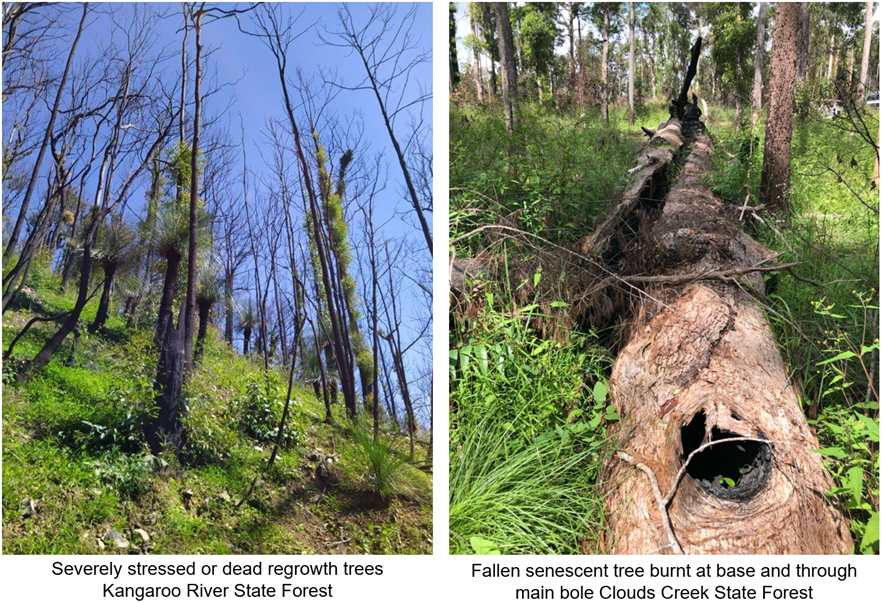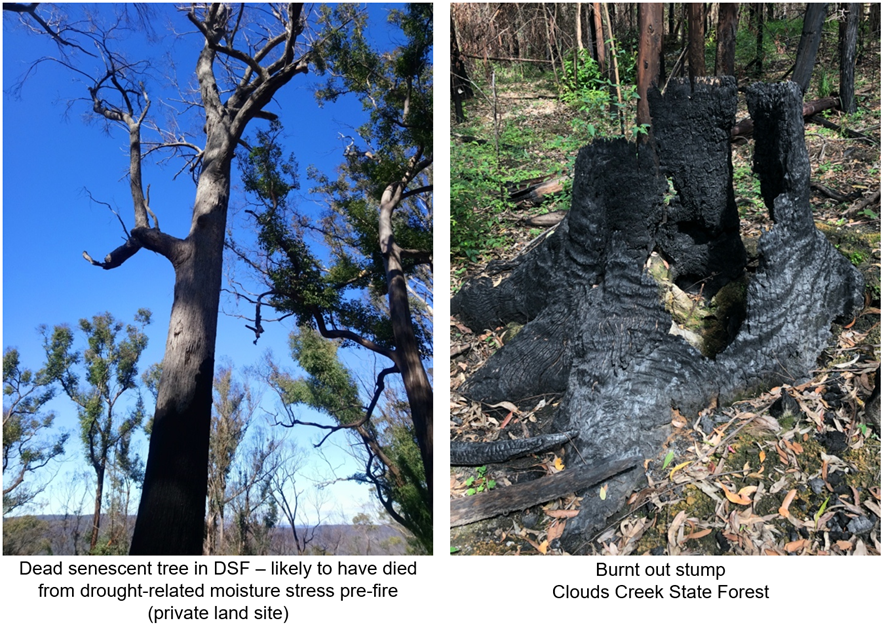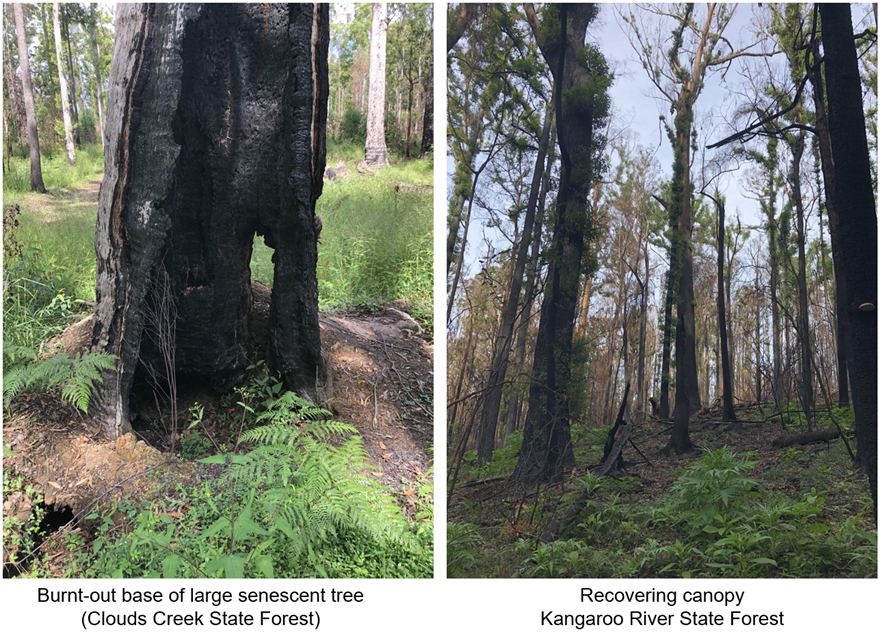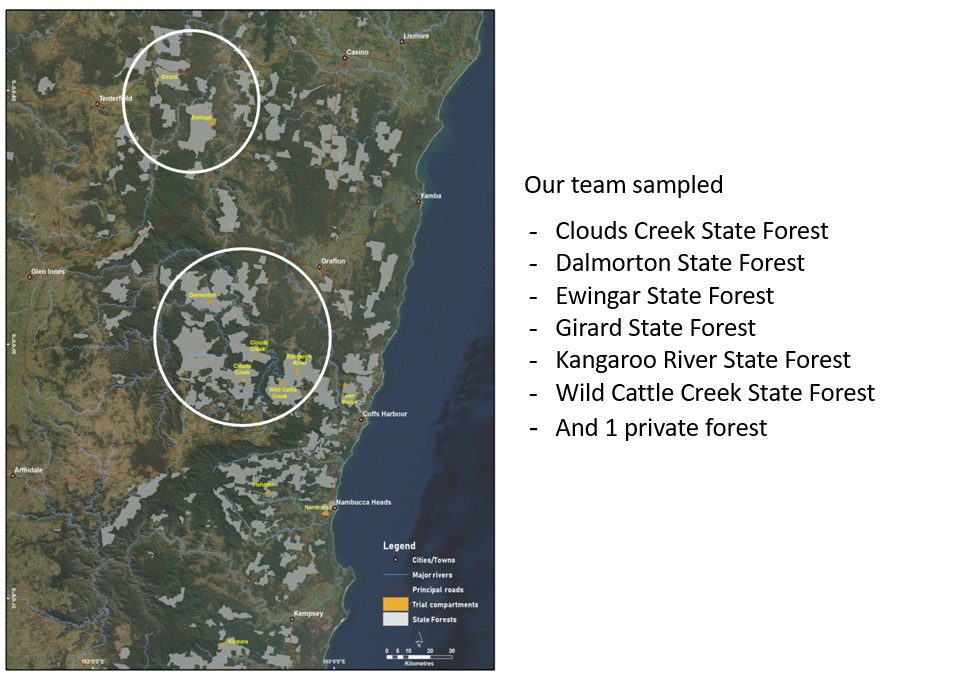



Australia recently suffered the worst bushfires in recorded history. Large areas of forests, woodlands and grasslands were affected, including large areas of old-growth forest.
The Department of Infrastructure, Planning and Environment – Environment, Energy and Science engaged 2rog to investigate the impact of fires on the status of selected old growth forest in north-east NSW. We reviewed the science and undertook a survey of selected forest sites to compare pre-fire and post-fire old-growth status based on measurements of forest structure and disturbance.
We found that old-growth status of the forest shortly after the fire was often retained. However, we considered that this could be short-lived as many older senescent trees were observed to have been severely burnt through the main bole and were now prone to tree-fall, and a cohort of observed eucalypt seedlings may start to contribute to regrowth cover within 3-4 years.

